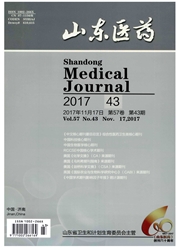

 中文摘要:
中文摘要:
目的探讨精子质量对不孕不育患者辅助生殖技术选择的指导作用。方法选择201对行常规体外受精胚胎移植术(IVF-ET)的不孕不育夫妇,其中行IVF-ET成功(二极体的胚胎数量占胚胎总数≥30%)者126对(IVF-ET组),IVF-ET失败(二极体的胚胎数量占总胚胎数〈30%)后行补救卵胞浆内单精子注射术(R-ICSI)75对(R-ICSI组)。比较两组精液常规、精子DNA完整率、精子顶体完整率、顶体反应率;体外受精后比较两组受精率、优胚胎率。结果 IVF-ET组精子密度、活力及正常形态率均高于R-ICSI组(P均〈0.05);R-ICSI组精子DNA断裂指数(DFI)明显高于IVF-ET组(P〈0.05),顶体完整率、顶体反应率两组比较无统计学差异(P均〉0.05);R-ICSI组受精率、优胚率低于IVF-ET组(P均〈0.05)。结论当精子密度低于11.1×106/m L,正常形态率低于1.4%,DFI高于15.9%,顶体完整率低于77.3%,顶体反应率低于15.7%时建议直接行R-ICSI助孕。
 英文摘要:
英文摘要:
Objective To evaluate the guidance of sperm quality in choosing assisted reproductive technology for patients with infertility. Methods We chose 201 infertile couples receiving conventional in vitro fertilization-embryo transplantation (IVF-ET), in whom, 126 couples (IVF-ET group) succeeded (the number of diodes accounted for≥30% of embryos) and 75 couples ( R-ICSI group) with unsuccessful IVF-ET ( the number of diodes accounted for 〈 30% of embryos) received remedy intra-cytoplasmie sperm injection (R-ICSI). We compared the semen routine, sperm DNA integrity rate, sperm acrosome intact rate, acrosome reaction rate, rate of fertilization and good embryo rate of the two groups. Resuits The normal morphology rate, sperm density and living rate of the IVF-ET group were higher than those in the R-ICSI group (all P 〈0.05). The sperm DNA index (DFI) of the R-ICSI group was significant higher than that of the IVF-ET group (P 〈 0.05). No statistical differences were found in the aerosome intact rate and acrosome reaction rate between the two groups ( all P 〉 0.05 ). The fertilization rate and good embryo rate of the R-ICSI group were lower than those of the IVF-ET group ( all P 〈 0.05). Conclusion When the sperm density is less than 11.07 × 10^6/mL, normal form rate is below 1.4% , DFI is higher than 15.9% , acrosome intact rate is below 77.3% and the acrosome reaction rate is less than 15.7%, we advise to use ICSI to assist reproduction.
 同期刊论文项目
同期刊论文项目
 同项目期刊论文
同项目期刊论文
 期刊信息
期刊信息
